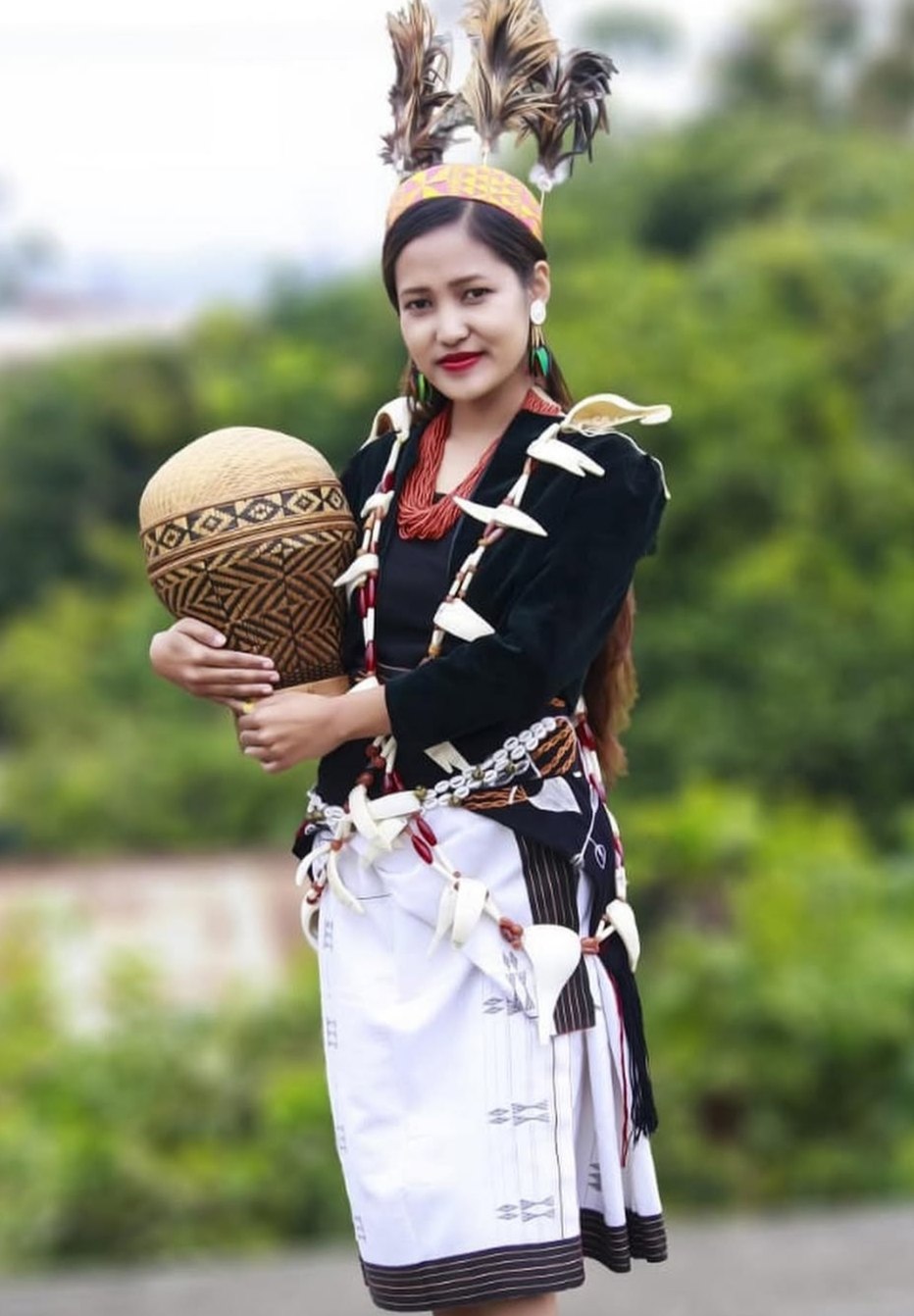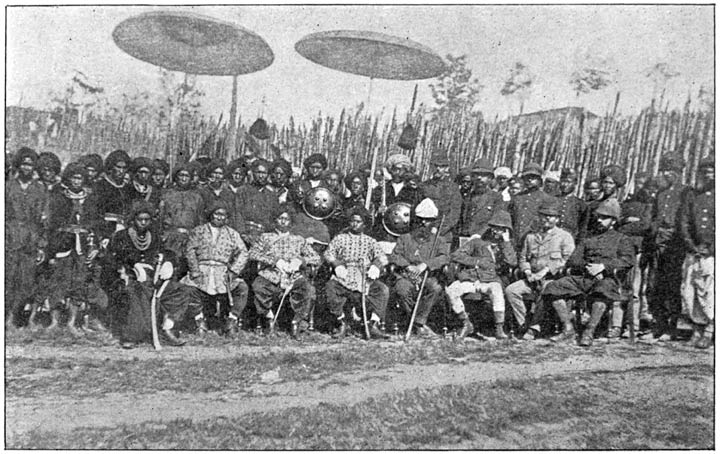The Meitei owes a significant portion of its historical resilience and cultural prominence to a profound interdependence with the indigenous Maring tribe. It is a plausible assertion that without the contributions of the Maring, the Meitei identity, as it is recognized today, might have diminished into historical obscurity. Central to this argument is the Arambai, a weapon of exceptional lethality that epitomized Meitei military dominance, its efficacy fundamentally reliant upon the specialized knowledge of the Maring.
In the medieval period, the Arambai—a dart fashioned from bamboo, tipped with iron, and coated with a potent poison from Maring tribe—served as a cornerstone of Meitei warfare. Deployed by skilled cavalry astride swift Manipuri ponies, Arambai instilled terror in adversaries, including the Burmese and Siamese forces.
Historical accounts suggest that Burmese soldiers, seasoned in conflict, maintained a vigilant watch on the skies during engagements, apprehensive of its deadly precision. The elite Arambai Tenggol, masters of this weapon, played a pivotal role in repelling incursions from neighboring kingdoms and hostile tribal entities. This martial prowess facilitated the expansion of Manipur’s territorial influence across the Barak Valley in Assam, the Kabaw Valley in Myanmar, and the Imphal Valley—a dominion sustained through strategic acumen. The Arambai’s effectiveness, however, was contingent upon its poisonous coating, a contribution uniquely attributable to the Maring tribe.
Residing in the rugged landscapes of Tengnoupal district and along the Indo-Myanmar border, the Maring possessed an unparalleled understanding of their region’s flora, particularly the wild vines from which they extracted a toxin of remarkable potency. This expertise was not merely a supplementary resource but a critical element that transformed the Arambai into a decisive instrument of Meitei defense. Absent this contribution, the Meitei forces might have faced their adversaries with diminished capacity, potentially altering the course of Manipur’s resistance against persistent external threats.
Meanwhile, the historical narrative becomes more complex with the introduction of Phunal Ningthou Telheiba, a figure shrouded in ambiguity. Associated with Phunal during the reign of Meitei king Naothingkhong (663–763 AD), Telheiba is noted for engaging in conflicts, reportedly against Naothingkhong and subsequently the Khuman king in the greater Imphal region—now known as Kangla—where the Meitei Ningthouja dynasty governed alongside Angom and Luwang chieftains.
However, Telheiba’s identity as a Meitei is improbable. The designation “Telheiba” likely denotes a title conferred for his archery proficiency rather than a given name. This raises pertinent questions: Who was he, and against whom did he wage war? Historical records indicate that by Naothingkhong’s time, the Angom principality had been assimilated into the Meitei polity, rendering internal conflict with Naothingkhong unlikely.
Was Telheiba a Maring leader from Phunal Clan, contending with external adversaries such as raiders from Myanmar or rival tribes. Alternatively, he may have been an immigrant from Myanmar’s Chindwin River or Kabaw Valley, regions from which several Shan kings are documented to have settled in Manipur. The origins of the Phunal as a distinct tribal entity remain unclear—were they a separate group, now lost to history, or a clan absorbed into the Maring tribe, as suggested by designations such as Phunal Maring, alongside Sandangsemba Maring, Khunbi Maring, langol Maring, Machi Maring, Khoibu Maring, and Sambum Maring, each reflecting their geographic settlements? Further scholarly inquiry into oral traditions and archaeological evidence is imperative to resolve these uncertainties.
A distinctive cultural practice of the Maring further enriches this narrative: the tradition of tooth blackening. The Maring employed natural dyes, likely derived from plants such as Melastoma malabathricum, to color their teeth black, a custom believed to fortify dental health and enhance aesthetic appeal. This practice, while diminishing in contemporary times, connects the Maring to broader regional traditions, notably among tribes in Myanmar, such as the Chin and certain Shan subgroups, who similarly blackened their teeth using plant-based concoctions or resins.
This shared custom hints at historical interactions or cultural diffusion across the Indo-Myanmar border, possibly linking the Maring to these Myanmar tribes through migration, trade, or common ancestry. The Maring’s proximity to Myanmar, coupled with Telheiba’s potential origins in the Kabaw Valley, strengthens the hypothesis of such ties, suggesting a cultural continuum that warrants deeper investigation.
The Maring’s significance extends beyond their material contributions, reflecting a deep-seated alliance with the Meitei. This relationship is encapsulated in the Manipuri adage, “Maringna saba shangbai naamma hangde?”—translated as “Maring’s granary are never empty”. This expression underscores a symbiotic dynamic wherein the Maring provided essential resources—toxins, expertise, and territorial support—while the Meitei leveraged these assets to secure victories. Maring settlements, spanning Shandansengba Maring in Imphal East to Tengnoupal, Machi, and border regions rich with the requisite vines, served as critical nodes in this partnership. Subgroups such as Phunal Maring in Kangpopi District and Khoibu Maring in Tengnoupal—where “Khoibu” signifies “bee owner,” indicative of the area’s ecological wealth—further reinforced this network.
Historical evidence derived from ancient Manipuri manuscripts highlights a profound genealogical connection between the Maring and Meitei people. The “Keiroi Puya” (“Sagei Salairol” chapter, page 152, published by the Manipur State Kala Academy, Imphal) records that Senba, a monarch of the Khuman clan within the Meitei lineage, fathered three sons: Laiku, Naikha, and Laipha. It identifies Laipha as the progenitor of the Maring tribe, thereby establishing a direct ancestral link and suggesting that the Maring share a common heritage with the Meitei, specifically traceable to the Khuman clan.
Similarly, the “Sakok Lamlen Ahanba” (page 80, edited by Pandit Khulem Chandrasekhar) portrays Senba as the ruler of Nganu Thumba. It notes that his sons—Laiku (alternatively spelled Laikhu, son of Senba Meemaba), who settled at Leitang; Naikha, who resided at Uchiwa; and Laipha, who became Maring—further substantiate Laipha’s foundational role in the origins of the Maring people.
The “Chekhong” Puya (“Sagei Salairel” chapter, page 71, published by the Manipur State Kala Academy) identifies Senba as the Khuman king, with Yoithongai serving as his deputy. It lists Senba’s sons as Laiku, Laikhan, and Laipha, with Laipha emerging as the ancestor of the Maring tribe. Following Senba’s reign, Yoithongai ascended to the Khuman throne, reinforcing the lineage narrative.
Further context is provided by the “Langthaballon” Puya, which states that Senba was born to Luwang King Punshiba and his ninth wife, Kyoiroi Nganu Thumpi. Following their divorce, Senba’s mother relocated him to Khuman territory, where he later assumed the role of Khuman King. The text confirms that, after Senba, Yengthoingai succeeded as Khuman king, and among Senba’s sons, Laiku established himself at Leitang, Laikha at Uchiwa, and Laipha became known as Maring Hao.
The “Leishirembi” manuscript (page 38, transcribed by Moirangthem Ibungotombi Meitei) elaborates that Uren Hanba, Langba, and Angangnga were offspring of Leima Tanu. The eldest, Uren Hanba, became the Thokchom of Moirang, while Langba’s descendants migrated to the hills and evolved into the Maring. Angangnga’s lineage persisted as Moirang Anouba, Moirang Mayum, and Lairenmayum, indicating that the Maring originated from the Moirang clan and thereby strengthening the notion of shared kinship.
Moreover, the “Keiroi” Puya enumerates various Meitei clans with purported Maring origins or affiliations: Khwailakpam and Hamom are designated as Maring Hao. Nongmeikapam are classified as Khoibu Maring, Nongtholbam and Langpoklakpam, located in Khurai and Keinou, are recognized as Maring Hao.
Additional clans, such as Kangujam from Tengkhan, Yengkhoiba Selungba (identified as Machi Khulel Maring), Yanglem at Samurou, Puyam at Thoubal, Ningthoujam (derived from Waikhom), and Wahengbam at Thoubal, are all documented as having Maring ancestry. This is not wrong, as we have seen Meitei becoming Tangkhul, Tangkhul becoming Meitei were seen in several texts.
The Meitei narrative of territorial integrity and enduring resilience is inextricably linked to the Maring tribe. The Arambai, an emblem of Manipur’s defiance, exemplifies this collaboration—its poisonous efficacy a Maring endowment, its battlefield success a Meitei achievement. The unresolved questions surrounding Phunal and Telheiba, alongside cultural practices like tooth blackening that echo traditions in Myanmar, need to go for extensive research to understand the Maring at depth. For this tribe emerges not merely as facilitators but as co-architects of the Meitei legacy through Arambai.
Photo credit – Kathillhak via Instagram
(C) Naorem Mohen
The writer can be reached at Twitter @laimacha
Editor | Signpost News







